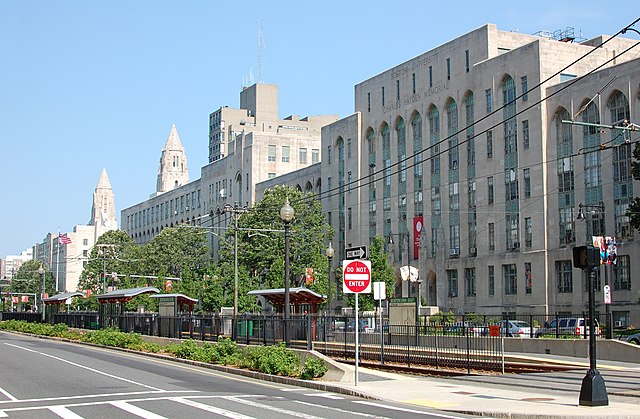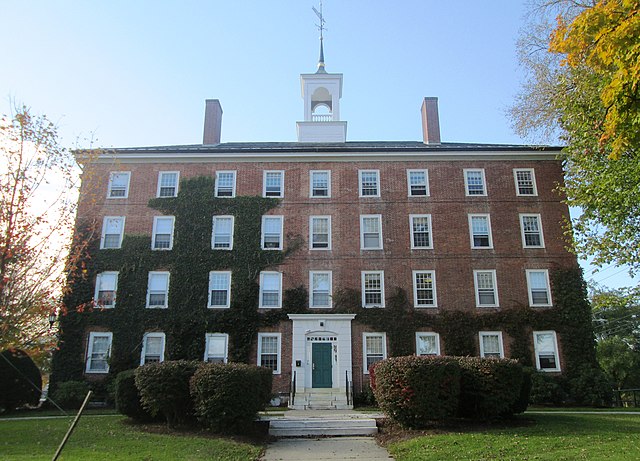Many of the nation’s top schools are also home to its best graduate programs in art history.
Master’s degree programs in this field set up students for a variety of art-related careers, from museum curators to university professors.
Students can expect to learn not only in traditional classrooms but also at galleries and museums, getting an up-close look at art’s evolution through the years.
Many top schools have on-campus museums and galleries where students can get hands-on experience and learn from the people that make the facilities work.
Several schools let students choose a specialty, such as a specific time period or location, to focus their studies. Internships and even international travel can add to the educational experience and help prepare students for their desired careers, as do faculty mentors.
While requirements vary by school, many demand that students show proficiency in at least one foreign language, which usually involves passing an exam. Most programs require students to complete a research paper to graduate as well.
Below, we’ll take a closer look at 10 of the best Master’s of Art History programs in the United States.
Some of these are terminal Master’s degree programs, while others are joint Master’s and PhD programs.
Boston University (Boston, MA)

Boston University’s (BU) program is actually a Master’s in History of Art & Architecture, giving students a thorough look at both subjects and their relationship.
The program aims to set up graduates for jobs at museums or in academia.
The program requires several prerequisites, most notably a two-semester survey class. Prospective students also need to have finished two years of foreign language study and three other history classes focusing on art and architecture.
Once in the program, students learn about art from around the world, with students able to pick classes from 10 concentrations, ranging from ancient to modern and Latin American to Islamic. They wrap up their studies with the scholarly Master’s Paper, which they then present to a group of faculty and fellow students during their second year of study.
Students also can enhance their degree by pursuing the additional Graduate Certificate in Museum Studies.
University of Washington (Seattle, WA)

The University of Washington offers students two ways to earn their Master’s in Art History: the hands-on practicum track, in which they get real-world experience, and the thesis track, recommended for students who want to continue on to a doctoral program.
The practicum track is geared toward students who plan to work in places like art galleries or museums.
They take traditional classes in addition to the practicum, which could be an internship, case study, or project. Students then must give a presentation about their experience.
Thesis students, meanwhile, have to show off their skills when it comes to doing research and presenting the results in a suitable, informative way.
All students also need to prove their proficiency in one foreign language.
Interested students don’t need to have an undergraduate degree in art history but should have taken some classes in the field and earned a GPA of at least 3.0 in them.
New York University (New York, NY)
Working professionals can earn a Master’s in the History of Art and Archaeology in just three years at New York University (NYU).
The part-time track allows students to continue working while also earning the degree, which requires 10 courses and a thesis to complete. Students who choose to go full-time can finish in two years.
In addition to two required foundation courses, students take seminars focusing on different time periods and locations worldwide. They also must pass a language test focusing on either French, German, or Italian. The thesis, meanwhile, is a 9,000-word document capable of being printed in a scholarly publication.
NYU also offers a dual master’s program, making it possible for art history students to also earn a Master of Science in Conservation of Historic and Artistic Works. That degree requires students to narrow down their studies to areas like the conservation of paintings or photographs.
UCLA (Los Angeles, CA)
At UCLA, students earn a master’s degree on their way to finishing a doctorate in art history.
Students usually finish the master’s portion of the two-step program in two years, and it typically takes them another five years to complete their PhD.
If students already have a master’s degree in the subject from another school, they cannot earn another one from UCLA and instead move right into the doctoral program.
The master’s program involves taking nine required courses that cover a variety of time periods and geographical regions. Students also must produce a roughly 30-page, thesis-style “qualifying paper,” which members of the department will review. Their feedback will help decide whether students receive the degree and move on to the PhD program.
UCLA requires its master’s students to be proficient in one foreign language and its doctoral candidates to know two languages. The university tests new students about their knowledge of the first language when they get to campus.
Tufts University (Medford, MA)
Two graduate programs focus on art history at Tufts University.
First, students can learn about art’s role in the world through the centuries while pursuing the Master of Arts in Art History.
People interested in working with art collections, such as in galleries or auction houses, meanwhile, can choose to pursue the Master of Arts in Art History and Museum Studies. This program mixes art history coursework with classes on how to handle artwork, and they also must complete a museum internship.
However, no matter which path students take, they need to have a reading knowledge of a foreign language to be admitted to the program.
Students in both degree tracks also must sit for a comprehensive exam and write either two qualifying papers or a thesis paper (students in the museum track have the additional option of writing a qualifying paper and taking an extra art history seminar course).
Hunter College (New York, NY)

Students can gain hands-on experience at galleries in the heart of New York City while studying at Hunter College.
The Master of Arts in Art History focuses on the art of ancient times through today from locations around the world. Hunter’s location in Manhattan makes it possible for students to enhance their studies at major museums around the city, with some classes even taking place at the Metropolitan Museum of Art.
Hunter’s program also is flexible. It holds all of its classes in either the afternoon or evening and offers a part-time option, making it easy for students to work full-time while pursuing their degree. They can even take just one class per semester toward the 30 credits needed to graduate (along with a thesis paper).
The program has even more benefits for residents of New York state, who get a tuition discount. For a recent school year, New York residents paid $5,065 per semester for full-time study and $425 per credit for part-time study. Both full- and part-time students from out of state, meanwhile, paid $780 per credit.
Williams College (Williamstown, MA)

Students call the Sterling and Francine Clark Art Institute home when pursuing a Master of Arts in Art History at Williams College.
The Clark facility houses not only a research institute but also an art museum and library where students get their own carrel.
During their two years in the program, students collaborate with the institute while also taking traditional classes that dive into not only art’s place in history but also curation.
The college rounds out the program experience with various workshops and a required trip abroad taken over about three weeks in the student’s first year, which the college pays for.
Williams students also have several opportunities for internships, including paid positions at the college’s partner museums or in the Chapin Library, home to many rare illustrated manuscripts and books. Research assistant positions are available as well.
The New School Parsons School of Design (New York, NY)
The New School Parsons School of Design teamed up with another renowned institution to offer its History of Design and Curatorial Studies master’s degree.
Cooper Hewitt, Smithsonian Design Museum, located in Manhattan, hosts the program, so students can gain valuable work experience with this well-respected facility’s staff members and collections.
If interested in research, students can use the libraries at the New School as well as at the museum and other nearby universities.
The 42-credit program takes two to four years to finish, depending on whether students go full- or part-time, and courses include a mix of history and curatorial studies.
Additionally, they can choose to pursue the nine-credit Graduate Minor in Design Studies, which students can earn through their electives. Students must either write a thesis or pass a master’s examination to graduate.
Columbia University (New York, NY)
Columbia University’s art history master’s degree program focuses on not only that subject but also archaeology.
This full- and part-time program lets students concentrate their studies in several specialties, ranging from Ancient Art and Archaeology to History of Photography.
The program prepares students to not only work as gallery and museum curators and administrators but also as scholars, with classes that look through the past as well as at the criticism and theory of art and archaeology.
And thanks to Columbia’s location, students can easily visit many prestigious art galleries and historical societies, many of which offer them free admission.
Qualified full-time students are eligible to spend the fall semester of their second year at the Université Paris 1 Panthéon-Sorbonne in France, which allows them to earn a dual Master of Arts from both Columbia and the Sorbonne.
Columbia recommends that prospective students interested in the more recent history of art apply instead to its master’s program in Modern Art and Contemporary Art: Critical and Curatorial Studies.
University of Pennsylvania (Philadelphia, PA)
University of Pennsylvania students get a well-rounded experience in class and at the many distinguished museums in and around Philadelphia.
Students must complete 10 courses and a master’s research paper in this two-year program. First-year students gain further insight into their studies through the required weekly colloquia, where they join faculty members in discussing different subjects.
The university also requires that students prove their proficiency in at least two foreign languages.
Penn students can even take up to three classes at the University of Delaware, Princeton University, or Bryn Mawr College or participate in semester- and year-long exchange programs at fellow Ivy League universities and other prestigious schools.
While Penn does offer a doctoral program in art history, it is separate from the master’s program, and so graduates must apply for admission to continue onto the PhD level.














